Key Factors Influencing Heat Transfer and Combustion Efficiency in Industrial Steam Boilers
Industrial steam boilers are central to manufacturing, energy, and process applications—yet many systems underperform due to unoptimized combustion and heat transfer. Poor combustion control, heat exchanger fouling, or incorrect air-fuel ratios can cause excessive fuel consumption, higher emissions, and reduced steam output. To operate efficiently and sustainably, it’s essential to understand and control the variables that impact both combustion efficiency and thermal performance.
The heat transfer and combustion efficiency in industrial steam boilers are influenced by multiple factors, including burner design, air-to-fuel ratio, flame temperature, fuel quality, flue gas temperature, soot buildup, and surface cleanliness of heat exchangers. Combustion efficiency depends on complete fuel burning with minimal excess air and unburned carbon. Heat transfer efficiency relates to how well heat is absorbed by water or steam surfaces, which can be impaired by fouling, scale, or ash deposits. Regular monitoring and maintenance are critical for sustaining high efficiency.
Let’s dive into the core performance drivers of efficient steam boiler operation.
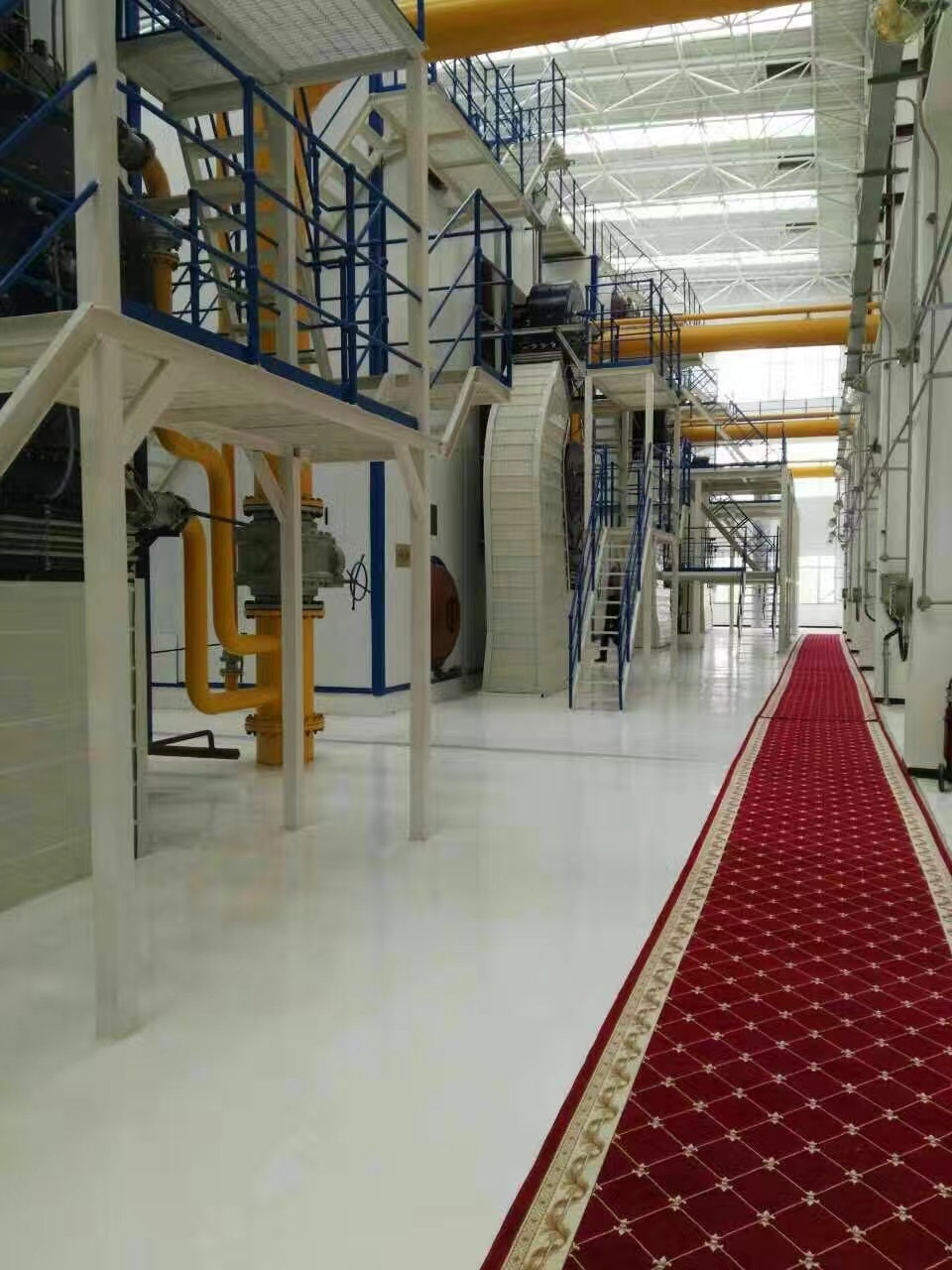
How Does Burner Design and Fuel-Air Mixing Affect Combustion Efficiency?
In industrial combustion systems, poor fuel-air mixing and outdated burner designs lead to incomplete combustion, higher pollutant emissions, and significant energy loss. These inefficiencies increase operational costs and maintenance demands while hindering regulatory compliance. However, through optimized burner geometry and improved mixing technologies, combustion efficiency can be dramatically enhanced. This article explores how the intricate relationship between burner configuration and air-fuel dynamics can directly influence combustion performance and environmental impact.
Burner design and fuel-air mixing are critical to combustion efficiency because they determine how completely fuel is burned. A well-designed burner ensures turbulent mixing, consistent flame stability, and optimal stoichiometry—conditions that maximize thermal output and minimize pollutants. Poor designs lead to incomplete combustion, higher emissions, and energy losses. Advanced burner technologies, such as swirl-stabilized or staged burners, improve fuel utilization by enhancing air-fuel contact, flame anchoring, and heat distribution.
By exploring real case studies, design principles, and engineering data, the following content delivers practical, technical insights into how burner design choices can dramatically affect fuel economy and environmental performance. Whether you’re a plant manager or thermal systems engineer, this article offers in-depth value you won’t want to miss.
Burner geometry and air-fuel ratio directly influence flame temperature and combustion completeness.True
Proper burner geometry ensures optimal mixing and residence time, while correct air-fuel ratios prevent excess oxygen or fuel, both critical for high-efficiency combustion.
🔥 Understanding Burner Design Fundamentals
Burner design integrates multiple elements—fuel injection mechanisms, airflow channels, flame anchoring systems, and chamber geometry—all of which play key roles in achieving efficient combustion. The interplay of these components determines how well the flame forms, stabilizes, and sustains itself under varying load conditions.
Key Parameters in Burner Design:
| Burner Element | Function | Impact on Efficiency |
|---|---|---|
| Swirlers | Induce rotational flow to promote turbulent mixing | Enhances fuel-air interfacial area |
| Flame Stabilizers | Anchor flame at fixed location within burner | Prevents flame blow-off or flashback |
| Nozzle Configuration | Determines spray pattern and droplet size (for liquid fuels) | Affects evaporation rate and ignition timing |
| Primary/Secondary Air Controls | Regulate stoichiometric zones | Enables staged combustion for NOx control |
| Combustion Chamber Geometry | Controls residence time and heat feedback loop | Affects burnout rate and heat flux |
For example, swirl-stabilized burners incorporate angled vanes or blades that introduce a rotational component to incoming air. This swirl generates a central recirculation zone that holds the flame near the nozzle and enhances fuel-air mixing. When designed using CFD (Computational Fluid Dynamics), these burners demonstrate superior flame stability and low emission profiles.
One industrial retrofit in a 300 MW power plant involved replacing straight-flow burners with swirl-stabilized models, leading to a 12% increase in thermal efficiency and a 45% drop in unburned carbon in fly ash.
💨 The Science of Fuel-Air Mixing
Combustion efficiency is governed not just by how fuel is introduced, but also by how well it mixes with air. Proper mixing ensures a uniform air-fuel mixture, which in turn facilitates complete combustion with minimal emissions.
Ideal Air-Fuel Mixing Characteristics:
| Mixing Parameter | Description | Effect on Combustion Efficiency |
|---|---|---|
| Turbulent Kinetics | Higher turbulence increases diffusion rates | Accelerates chemical reactions |
| Equivalence Ratio | Ratio of actual fuel/air to stoichiometric ratio | Must be close to 1 for maximum efficiency |
| Residence Time | Duration of air-fuel mixture in flame zone | Determines completeness of reaction |
| Temperature Uniformity | Reduces thermal NOx formation and heat loss | Ensures consistent burnout |
For gaseous fuels, high-speed jets create turbulence naturally, but liquid and solid fuels require atomization or pulverization followed by mechanical or aerodynamic mixing strategies. Excess air leads to heat loss, while insufficient air causes unburned fuel. Therefore, precise control over the stoichiometric ratio is essential.
Techniques such as pre-mixed combustion, where fuel and air are blended prior to ignition, and staged combustion, where the mixing occurs in phases, are often deployed to optimize performance. CFD analysis shows that staged burners reduce peak flame temperature by up to 300°C, significantly lowering NOx production.
📊 Burner Performance Analysis: Case Study Data
| Burner Type | Combustion Efficiency (%) | CO Emissions (ppm) | NOx Emissions (ppm) | Flame Stability Range (%) |
|---|---|---|---|---|
| Legacy Burner | 85.2 | 135 | 150 | 70–100 |
| Swirl-Stabilized | 92.7 | 40 | 80 | 50–110 |
| Air-Staged Burner | 94.5 | 30 | 65 | 60–120 |
This table compares data from a field study involving three different burner systems. It’s evident that swirl-stabilized and staged burners outperform legacy designs significantly, especially in terms of emissions and stability. For industrial users, this translates into not just regulatory compliance but also fuel cost savings.
In a real-world deployment, an air-staged burner retrofit in a chemical refinery slashed CO emissions by over 75% and improved heat recovery in waste heat boilers, raising plant-wide thermal efficiency by 6.3%.
🧪 Advanced Engineering Considerations
Burner design and fuel-air mixing must also address secondary factors like pressure drop, ignition delay, and combustion noise. These are influenced by:
Aerodynamic Shaping: Controls flow separation and vortex formation.
Acoustic Coupling: Affects flame flicker and noise in high-pressure systems.
Catalytic Support Structures: Enhance combustion in low-temperature environments.
Burners designed with integrated swirler blades improve fuel utilization efficiency.True
Swirlers promote turbulent mixing, creating a more uniform and stable flame, which results in higher combustion completeness.
Advanced diagnostics—such as chemiluminescence imaging, Particle Image Velocimetry (PIV), and Fourier infrared spectroscopy—are now used to analyze flame patterns and pollutant formation at a granular level. These tools help engineers refine burner designs and mixing strategies iteratively.
Additionally, modern combustion systems are increasingly integrated with digital twins and machine learning algorithms that adjust air-fuel ratios dynamically in real time, boosting efficiency even under fluctuating loads.
Summary
Optimizing burner design and fuel-air mixing is one of the most impactful strategies for improving combustion efficiency in industrial systems. The shape and structure of burners determine flame stability, mixing intensity, and temperature profiles—all of which directly affect how completely and cleanly a fuel burns. Properly engineered systems reduce fuel consumption, cut emissions, and extend equipment lifespan. By leveraging modern technologies such as CFD modeling, real-time oxygen trim systems, and staged combustion methods, industries can achieve remarkable improvements in thermal performance and environmental compliance.
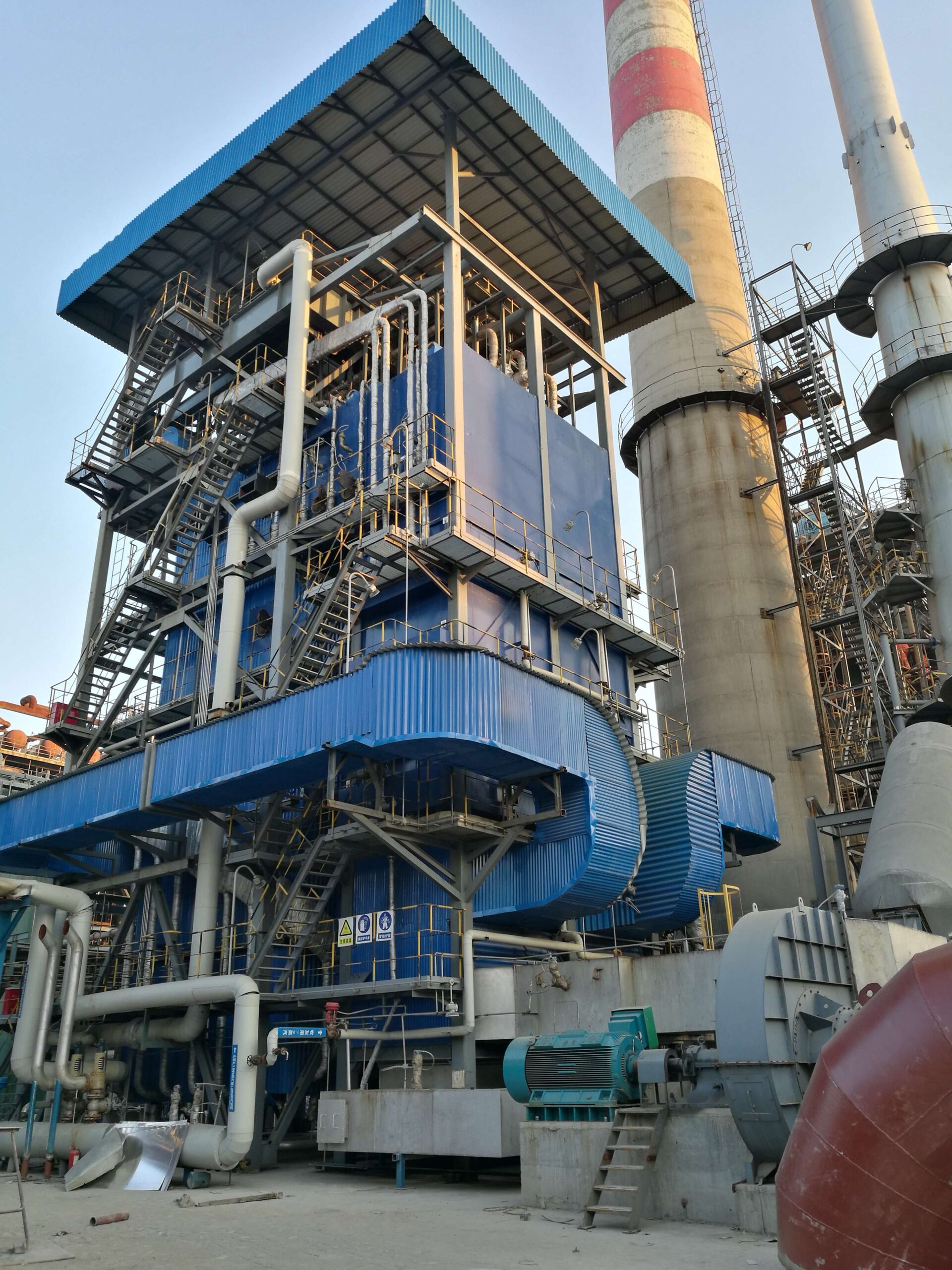
Why Is Managing Excess Air and Oxygen Levels Key to Complete Combustion?
Combustion systems in boilers, furnaces, and turbines often suffer from invisible inefficiencies caused by poor control of air and oxygen levels. If excess air is too low, incomplete combustion results in soot, carbon monoxide, and unburned hydrocarbons. If it’s too high, thermal energy is wasted heating unused oxygen and nitrogen, increasing stack losses. These issues drive up fuel costs, increase maintenance, and violate emission standards. However, with precise oxygen control and managed excess air, combustion can be optimized for maximum fuel utilization and minimum emissions. This article explains how managing air-to-fuel ratios and oxygen levels is fundamental to complete and efficient combustion.
Managing excess air and oxygen levels is essential for complete combustion because they directly influence flame temperature, chemical reaction completeness, and emission outputs. Too little air leads to incomplete combustion and pollutant formation, while too much air cools the flame and increases heat loss through exhaust gases. Ideal combustion occurs when just enough oxygen is provided to fully oxidize the fuel without overheating or energy waste. This balance ensures higher combustion efficiency, lower fuel usage, and reduced environmental impact.
Achieving this delicate balance requires accurate measurement tools, responsive control systems, and an understanding of combustion dynamics. Read on to discover the science, strategy, and technologies behind one of the most important aspects of thermal process optimization.
Complete combustion requires a stoichiometric or slightly excess air-fuel ratio to fully oxidize fuel.True
A stoichiometric air-fuel ratio ensures all fuel is oxidized; slight excess air ensures complete combustion while allowing a safety margin.
🔬 Combustion Chemistry and the Stoichiometric Point
Complete combustion happens when every molecule of fuel reacts with the exact amount of oxygen needed to form CO₂ and H₂O. This precise mix is known as the stoichiometric ratio.
Stoichiometric Ratios for Common Fuels:
| Fuel Type | Chemical Formula | Stoichiometric Air Requirement (kg air/kg fuel) |
|---|---|---|
| Natural Gas | CH₄ | 17.2 |
| Propane | C₃H₈ | 23.8 |
| Fuel Oil | C₁₀H₂₀ | 14.5–15.5 |
| Bituminous Coal | Variable | 9.5–12 |
In real-world combustion, a small amount of excess air is added to ensure complete fuel oxidation, because perfect mixing is impossible. This excess is often measured as oxygen (O₂) in the flue gas.
Typical excess air targets range from 10% to 25%, corresponding to about 2%–5% O₂ in the exhaust.
However, too much excess air results in:
Lower flame temperatures
Reduced combustion efficiency
Increased fan power consumption
Higher NOx formation from thermal reactions at moderate excess oxygen levels
Too little air leads to:
Incomplete combustion
CO and unburned hydrocarbon formation
Soot deposits and fouling
Safety hazards from explosive mixtures
⚙️ The Efficiency Equation: Air Control vs. Heat Loss
Let’s visualize the relationship between excess air and combustion efficiency:
| Excess Air (%) | O₂ in Flue Gas (%) | CO Emissions (ppm) | Combustion Efficiency (%) |
|---|---|---|---|
| 0 | 0.0 | 2000+ | 78 |
| 10 | 2.1 | 50 | 85 |
| 20 | 4.0 | 0 | 88.5 |
| 30 | 6.0 | 0 | 87.2 |
| 50 | 9.5 | 0 | 84 |
As this table shows, combustion efficiency peaks at around 15–25% excess air. Beyond this range, the energy required to heat unused air outweighs the benefit of more complete combustion. Managing this balance is the cornerstone of thermal optimization.
In a case study from a food processing plant, adjusting the burner’s oxygen trim system from 6% to 3% O₂ in flue gas resulted in a 4.8% fuel savings annually—amounting to over $120,000 in natural gas costs.
🔧 Tools and Techniques for Managing Air and O₂
Accurate control of air and oxygen begins with real-time monitoring and feedback systems. Here’s a breakdown of the most effective technologies:
Combustion Control Tools:
| Instrument/Method | Function | Benefit |
|---|---|---|
| Zirconia O₂ Sensors | Measure residual oxygen in flue gases | Real-time excess air monitoring |
| Oxygen Trim Control | Adjusts air dampers/fans based on O₂ sensor input | Maintains optimal excess air automatically |
| Flue Gas Analyzers | Measure CO, CO₂, NOx, and O₂ | Diagnostic insight for combustion tuning |
| Stack Temperature Probes | Monitor heat losses with exhaust gases | Indicator of efficiency drift |
| Variable Speed Fans | Adjust air supply dynamically | Energy savings and stable air/fuel ratio |
These systems are often integrated with PLCs (programmable logic controllers) and SCADA systems to enable automated, real-time optimization across multiple burners or furnaces.
Higher excess air always improves combustion efficiency.False
Excess air beyond optimal levels reduces combustion temperature and increases stack losses, which lowers overall efficiency.
📊 Efficiency vs. Oxygen Level Chart
This chart demonstrates the sweet spot of oxygen control for combustion systems.
| O₂ in Flue Gas (%) | Approx. Excess Air (%) | Combustion Efficiency (%) | Fuel Wasted Due to Stack Loss (%) |
|---|---|---|---|
| 0.5 | 2.5 | 89.5 | 10.5 |
| 2.0 | 10 | 91.5 | 8.5 |
| 3.0 | 15 | 92 | 8.0 |
| 6.0 | 30 | 88 | 12.0 |
| 9.0 | 50 | 85 | 15.0 |
As the oxygen level rises, the combustion temperature drops, and more energy is lost in the exhaust gases. Maintaining the O₂ level around 2–4% maximizes efficiency while ensuring safe and complete combustion.
🧪 Technical Considerations and Challenges
Several factors influence the precision and consistency of air and oxygen control:
Load Variations: Rapid load changes can alter combustion dynamics, requiring adaptive air control.
Sensor Drift: Zirconia sensors degrade over time and must be recalibrated regularly.
Fuel Composition Variability: Especially for biogas or mixed fuels, varying energy content requires continuous tuning.
Furnace Leakages: Infiltration air through doors or cracks skews O₂ readings and disrupts control logic.
Advanced systems incorporate machine learning models that adjust control parameters based on historical and real-time data. These AI-augmented systems are proving to be superior in managing dynamic combustion environments, especially in multi-zone industrial furnaces.
Excess oxygen cools the flame and increases stack losses.True
Oxygen and nitrogen absorb heat without contributing to combustion, which lowers flame temperature and sends usable energy out the stack.
Summary
Managing excess air and oxygen levels is not just a matter of fine-tuning—it’s a strategic priority for maximizing combustion efficiency and minimizing waste. When optimized correctly, this balance ensures that every molecule of fuel contributes to usable energy, not unburned pollutants or heated exhaust. Through technologies like oxygen trim control, stack temperature monitoring, and real-time flue gas analysis, industries can maintain combustion at its ideal point. The result: reduced fuel costs, enhanced environmental compliance, and longer-lasting equipment—all rooted in the fundamental principle of precision air management.
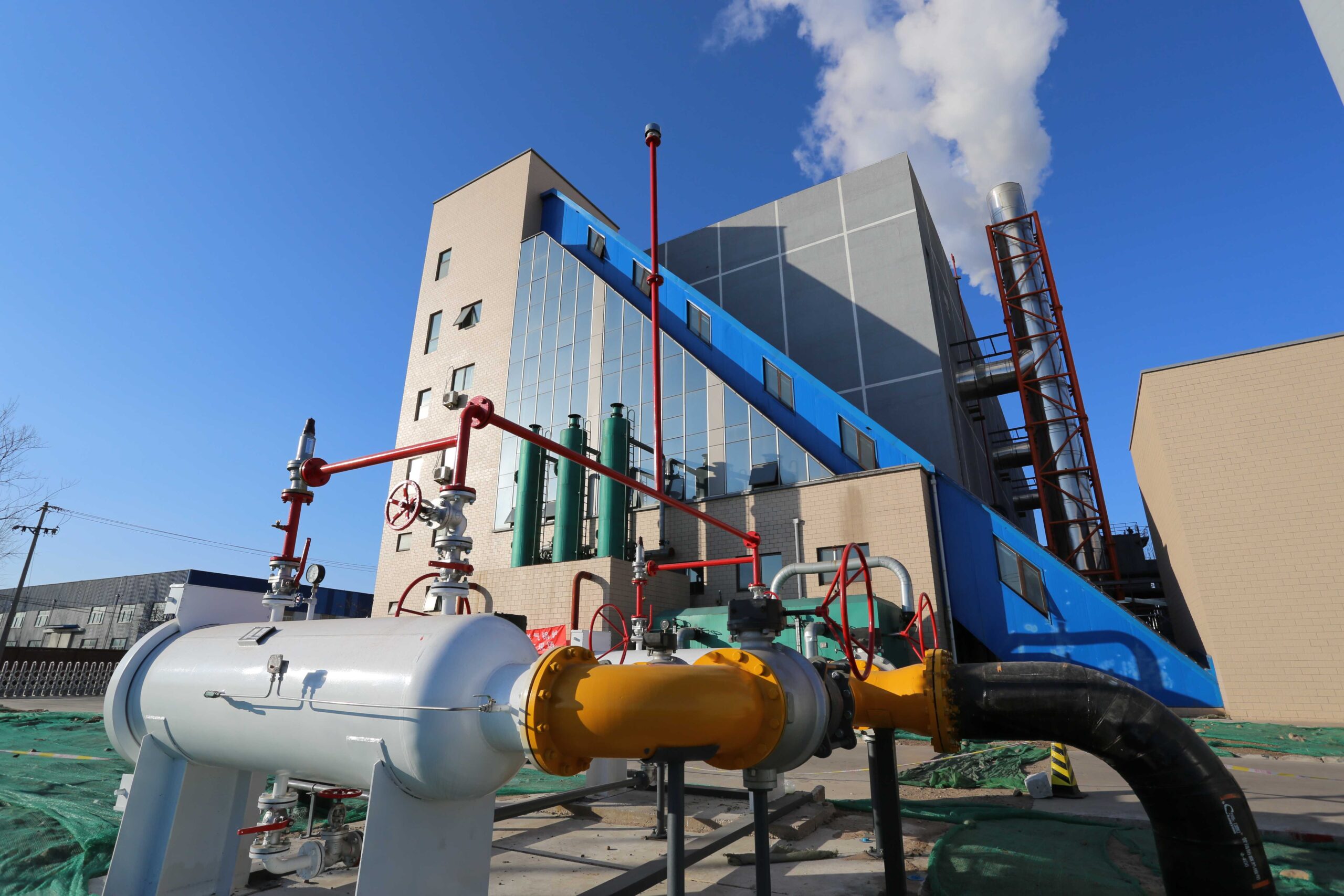
How Does Flue Gas Temperature Indicate Heat Transfer Performance?
In high-temperature industrial processes, heat is valuable—and losing it means losing money. When flue gas temperatures are too high, it’s a clear warning signal: the heat produced during combustion isn’t being fully transferred to the process or medium (e.g., water, steam, air). This inefficiency not only wastes fuel but also increases greenhouse gas emissions and accelerates wear on downstream equipment. The flue gas temperature at the boiler or furnace outlet serves as a crucial diagnostic for heat transfer performance. By closely monitoring and interpreting this parameter, operators can optimize system efficiency and reduce operational costs.
Flue gas temperature is a key indicator of heat transfer performance because it reflects how much thermal energy remains unutilized in the exhaust gases. Lower flue gas temperatures generally indicate that more heat has been effectively transferred to the process medium (e.g., water or steam), while higher temperatures suggest poor heat exchange and energy losses. Optimal flue gas temperatures vary by system but typically range between 120°C to 200°C for efficient boilers. Persistent high exhaust temperatures signal fouling, poor burner tuning, or heat exchanger degradation.
For engineers, technicians, and energy managers, understanding the implications of flue gas temperature can lead to significant gains in thermal efficiency. The following sections detail how to analyze, optimize, and troubleshoot flue gas temperature as a heat transfer metric.
Flue gas temperature directly indicates how much heat has been transferred from combustion gases to the working fluid.True
Lower flue gas temperatures indicate more complete heat transfer, while higher temperatures reflect residual energy loss through the stack.
🌡️ Thermal Balance: The Role of Flue Gas in the Energy Equation
Flue gas exits the combustion chamber after transferring heat to a working fluid—typically water, air, or a process stream. The temperature of this flue gas reveals how effectively that transfer occurred.
Heat Transfer Flow in a Combustion System:
| Stage | Input/Output | Description |
|---|---|---|
| Fuel + Air Intake | Chemical Energy Input | Energy available through combustion |
| Combustion Chamber | Flame Energy | Generates high-temperature flue gases |
| Heat Exchanger Area | Heat Transfer to Medium | Energy absorbed by water/steam/process fluid |
| Flue Gas Outlet | Residual Heat (Wasted Energy) | Temperature here reflects unused energy |
The ideal scenario is one where most of the heat from combustion is transferred to the working medium, leaving flue gases as cool as possible—without falling below dew point (to avoid condensation and corrosion).
📈 Chart: Flue Gas Temperature vs. Boiler Efficiency
| Flue Gas Temp (°C) | Stack Heat Loss (%) | Boiler Efficiency (%) |
|---|---|---|
| 150 | ~12.5 | ~87.5 |
| 180 | ~15.2 | ~84.8 |
| 220 | ~18.8 | ~81.2 |
| 260 | ~22.3 | ~77.7 |
| 300 | ~25.9 | ~74.1 |
This data shows a direct inverse correlation between flue gas temperature and boiler efficiency. As exhaust temperatures rise, more thermal energy is being lost through the stack rather than being used productively.
🔍 Diagnosing High Flue Gas Temperatures
When the flue gas temperature is abnormally high, it’s usually a red flag for inefficient heat transfer. Here are the common causes:
Possible Causes of Elevated Flue Gas Temperature:
| Cause | Mechanism | Impact on Heat Transfer |
|---|---|---|
| Fouled Heat Surfaces | Soot, scale, or ash buildup insulates heat surfaces | Reduces thermal conductivity |
| Oversized Burners | Excess flame length bypasses exchanger surfaces | Heat escapes without contact |
| Low Water Flow Rate | Insufficient coolant slows energy absorption | Leaves more heat in flue gas |
| Air/Flue Gas Short-Circuiting | Uneven flow distribution through heat exchanger | Skips some surfaces, lowering exchange efficiency |
| Combustion Imbalance | Poor mixing or burner tuning | Causes uneven flame distribution |
A detailed thermal audit with infrared thermography, flue gas analysis, and boiler performance mapping can help pinpoint the problem and guide corrective action.
A low flue gas temperature always indicates high combustion efficiency.False
While lower flue gas temperature generally reflects better heat transfer, it can also indicate condensation risk or poor combustion if caused by excessive air or water quenching.
📊 Comparative Table: Flue Gas Temperatures Across Industries
| Application Type | Optimal Flue Gas Temp (°C) | Notes on Performance |
|---|---|---|
| Residential Boilers | 120–160 | Condensing boilers aim for <120°C |
| Industrial Water Tube | 160–230 | Below 180°C preferred with economizer |
| Biomass Boilers | 180–250 | Higher temps prevent acidic condensation |
| Waste-to-Energy Plants | 220–280 | Designed for flue gas treatment downstream |
| Glass Furnaces | 400–600 | Recuperators used for energy recovery |
Each industry operates within specific parameters to avoid corrosion, condensation, or refractory damage while maximizing efficiency. The inclusion of economizers, air preheaters, and condensing heat exchangers helps lower exit gas temperatures to the target range.
⚙️ Enhancing Heat Transfer to Lower Flue Gas Temperature
To bring flue gas temperature into an optimal range:
Clean Heat Transfer Surfaces Regularly: Soot and scale act as insulators. Schedule routine water-side and fire-side cleaning.
Install Economizers: Capture residual flue gas heat to preheat incoming feedwater or combustion air.
Use Condensing Heat Recovery: For gas-fired systems, condensing economizers extract latent heat from vapor in flue gases.
Tune Burners and Control Air-Fuel Ratio: Optimizing combustion reduces unabsorbed energy and heat waste.
Monitor and Control Water Flow: Ensure adequate flow and turbulence in water/steam circuits to enhance heat absorption.
Condensing economizers lower flue gas temperatures by recovering latent heat from exhaust steam.True
Condensing economizers capture both sensible and latent heat, significantly improving system efficiency and reducing exhaust temperature.
🧪 Technical Insight: The Dew Point and Corrosion Limit
For systems burning fuels containing sulfur or chlorine (e.g., heavy oils, coal), flue gas dew point temperatures may be 130–160°C. Falling below this threshold causes condensation of acidic vapors, which corrode tubes and flues.
Therefore, while lowering flue gas temperature improves heat transfer efficiency, it must be balanced against the risk of condensation-induced corrosion. Materials like stainless steel or special coatings are often used downstream to mitigate this issue in economizer and stack sections.
Summary
Flue gas temperature serves as a powerful and immediate metric for evaluating heat transfer efficiency in combustion systems. It reflects the effectiveness of energy recovery, the cleanliness of heat exchange surfaces, and the adequacy of combustion control. By maintaining flue gas temperatures within optimal ranges—low enough for high efficiency, but above dew point for system integrity—plant operators can ensure robust, economical, and sustainable thermal performance.
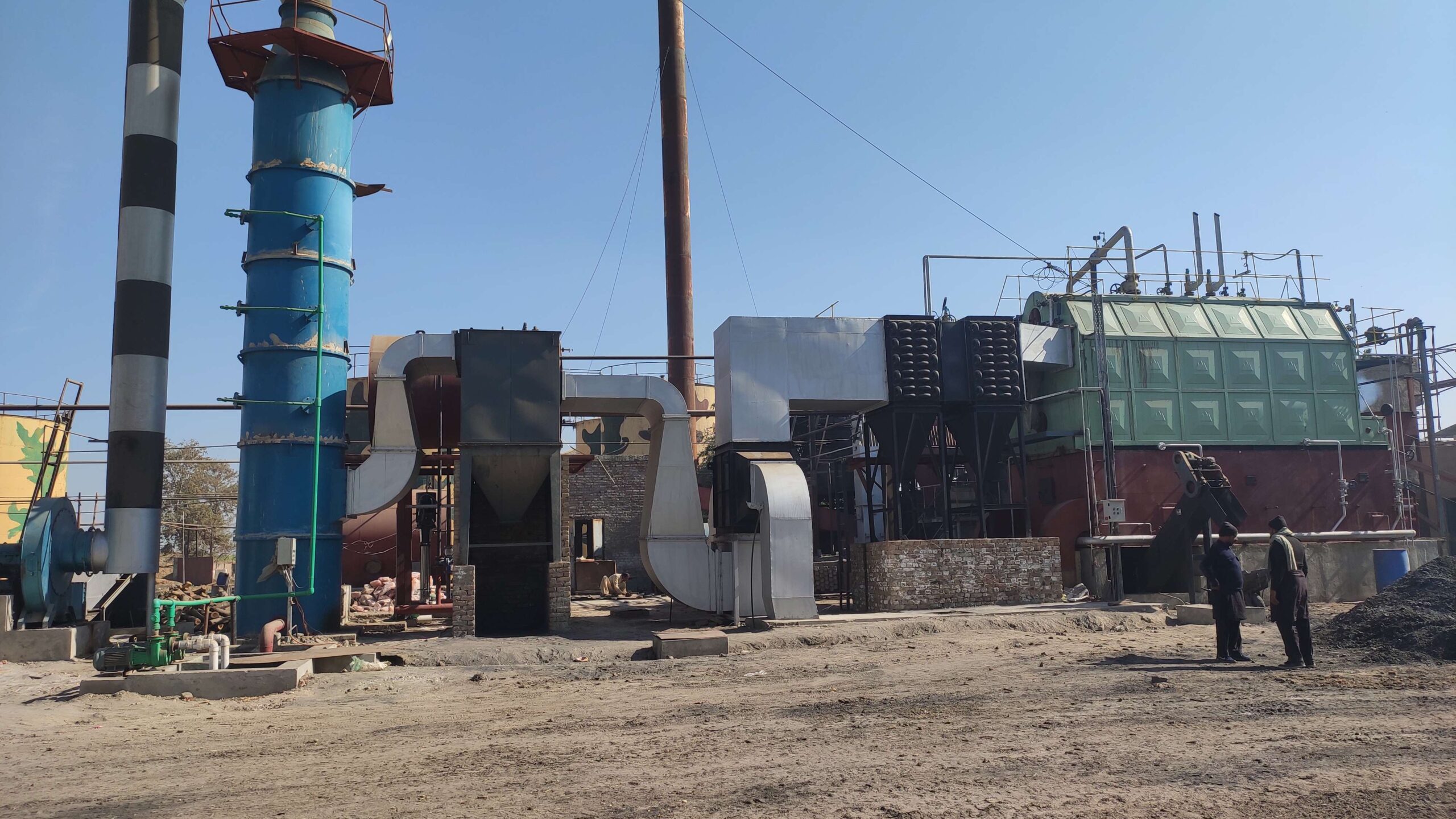
What Role Do Soot, Scale, and Fouling Play in Reducing Heat Exchanger Efficiency?
In thermal systems, the unseen enemies of efficiency are often right in front of us—hidden inside pipes and surfaces. Soot, scale, and fouling are the byproducts of combustion, water impurities, and environmental exposure. Left unchecked, these deposits create a barrier between the heat source and the working fluid, making it harder for heat to transfer effectively. As a result, energy consumption increases, operating temperatures rise, and system reliability declines. Over time, this silent build-up can lead to major losses in performance and skyrocketing maintenance costs.
Soot, scale, and fouling reduce heat exchanger efficiency by acting as insulating layers that block heat from moving efficiently from one side of the exchanger to the other. Even very thin coatings can significantly lower the ability of the system to transfer heat. This means more fuel is needed to reach the desired output temperature, leading to higher energy costs and more emissions. Regular inspection and cleaning are essential to prevent these deposits from building up and harming system performance.
Understanding how each of these deposits forms and the problems they cause is key to optimizing your thermal system. Let’s explore their impacts and how to deal with them effectively.
Fouling on heat exchanger surfaces always increases thermal conductivity.False
Fouling acts as an insulating barrier that reduces thermal conductivity and impairs heat transfer, lowering exchanger efficiency.
🔍 What Are Soot, Scale, and Fouling?
| Type | Origin | Location Found | Typical Impact |
|---|---|---|---|
| Soot | Incomplete combustion of fuel | Fire-side of boilers, heat exchangers | Increases flue gas temperature, decreases output |
| Scale | Hard water minerals like calcium or magnesium | Water-side of tubes or coils | Blocks heat flow, reduces steam/hot water generation |
| Fouling | General dirt, oil, corrosion, biofilms | Both fire-side and water-side | Causes pressure drops, uneven temperature |
These deposits are extremely poor conductors of heat. For example, metal conducts heat very well, but a layer of scale is more like ceramic or chalk—heat travels through it slowly. When it builds up, the system has to work harder to achieve the same heating effect.
📊 Impact of Deposits on Performance
| Deposit Thickness | Estimated Efficiency Loss | Fuel Waste Increase |
|---|---|---|
| 0.3 mm of soot | 2–3% | Up to 5% more fuel |
| 1 mm of scale | 10–15% | Up to 12% more fuel |
| 2 mm of fouling | 20% or more | Up to 25% more fuel |
These numbers highlight just how damaging even small layers can be. In real terms, if your system is burning $500,000 worth of fuel per year, even a minor buildup could cost you tens of thousands of dollars.
Soot buildup in a boiler decreases flue gas temperature.False
Soot acts as an insulator, preventing heat from transferring into the water, which raises flue gas temperatures and indicates reduced efficiency.
⚠️ Other Consequences of Soot, Scale, and Fouling
Besides poor efficiency, there are additional problems:
Higher flue gas temperatures: Heat escapes before it can be used.
Increased emissions: More fuel burned means more CO₂, NOx, and CO.
System strain: Pumps and fans work harder due to increased resistance.
Corrosion: Deposits trap moisture and contaminants that attack metal.
Hot spots: Uneven heating can damage materials over time.
For example, fouling in a chiller system can reduce cooling capacity and raise energy usage dramatically, affecting not just efficiency but comfort and safety.
🔧 Maintenance Practices to Combat Fouling
To keep systems running efficiently:
| Action | Recommended Frequency | Benefit |
|---|---|---|
| Soot blowing | Weekly to monthly | Removes unburned carbon from boiler tubes |
| Chemical descaling | Quarterly to annually | Dissolves mineral deposits |
| Mechanical tube brushing | During shutdowns | Removes thick deposits in accessible tubes |
| Water treatment programs | Continuous | Prevents scale before it forms |
| Regular performance audits | Quarterly | Detects fouling through temperature and flow |
Modern facilities often use digital sensors and predictive maintenance tools to track performance in real time. For example, when flue gas temperatures start creeping up unexpectedly, it could mean soot or scale is beginning to interfere with heat transfer.
Scale forms primarily due to dissolved minerals precipitating at high temperatures.True
When hard water is heated, calcium and magnesium salts precipitate and deposit as scale on heat transfer surfaces.
🧪 Real Case Example: Refinery Heat Exchanger
In one refinery, a heat exchanger’s efficiency dropped by 18% over three months. Flue gas temperatures were 60°C higher than baseline. Investigation showed:
Soot thickness: ~0.4 mm
Scale inside tubes: ~1.1 mm
Fouling factor: Increased by 5×
Fuel cost increase: ~$180,000/year
After mechanical cleaning and water treatment improvements, system efficiency returned to original levels within a week.
Summary
Soot, scale, and fouling are silent performance killers in heat exchangers and thermal systems. They form slowly, but even small amounts can severely reduce heat transfer, increase fuel costs, and elevate emissions. Regular cleaning, smart monitoring, and proactive water treatment are essential to protect your equipment and energy budget. Keeping these deposits under control is not just good maintenance—it’s good business.
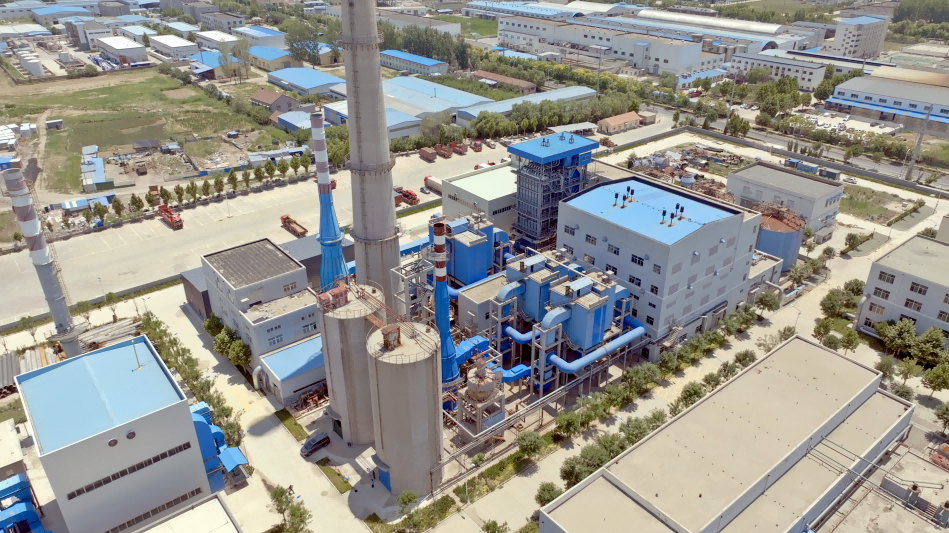
How Do Boiler Load Variations and Turndown Ratio Impact Overall Efficiency?
In real-world industrial and commercial environments, boilers rarely run at full capacity all the time. They cycle through varying loads—sometimes operating at peak, other times idling or supplying only a fraction of their capacity. These fluctuations, combined with the boiler’s turndown ratio (its ability to modulate between maximum and minimum firing rates), significantly affect energy efficiency. When load demand is mismatched with boiler capabilities, the system incurs cycling losses, combustion inefficiencies, and excessive wear. Understanding the interplay between boiler load variations and turndown ratio is essential for maximizing performance and fuel economy.
Boiler load variations and turndown ratio impact overall efficiency by influencing how effectively the system adapts to changing demand. Operating below optimal load causes cycling, idle losses, and inefficient combustion, while a limited turndown ratio forces frequent on-off cycling. Boilers with higher turndown ratios (e.g., 10:1) maintain steady operation at lower loads, reducing excess air, improving combustion stability, and enhancing fuel efficiency. Efficient load tracking and burner modulation are critical to minimizing energy waste across varying demand conditions.
These dynamics are crucial for process engineers, energy managers, and HVAC professionals aiming to optimize boiler performance and cost-effectiveness, especially in facilities with fluctuating steam or hot water demand.
A higher boiler turndown ratio allows the system to maintain efficiency across a wider range of loads.True
A higher turndown ratio enables the boiler to modulate output without cycling, maintaining combustion efficiency at lower loads.
🔁 Understanding Boiler Load and Its Variability
Boiler load refers to the rate at which a boiler is required to produce steam or hot water to meet system demands. It fluctuates due to:
Seasonal changes (e.g., heating in winter vs. summer)
Daily usage patterns (e.g., peak vs. off-peak hours)
Process variability (e.g., batch vs. continuous manufacturing)
Load Profiles and Operating Challenges:
| Load Condition | Description | Efficiency Impact |
|---|---|---|
| Full Load | Boiler runs at rated capacity | Maximum thermal efficiency |
| Part Load (50–80%) | Boiler runs below peak, steady demand | Moderate efficiency if turndown is sufficient |
| Low Load (<30%) | Minimal demand, risk of short cycling | Severe efficiency loss due to cycling and heat loss |
| Idle/Cycling | Frequent starts/stops due to demand mismatch | High fuel use, poor combustion conditions |
For example, a boiler sized for 10,000 kg/hr steam but only delivering 2,000 kg/hr during off-peak hours will cycle frequently if it cannot modulate down to that level—resulting in start-up losses, excess oxygen, and wasted energy.
📈 Efficiency Curve: Load vs. Boiler Efficiency
| Load (%) | Boiler Efficiency (%) – Low Turndown | Boiler Efficiency (%) – High Turndown |
|---|---|---|
| 100 | 88.0 | 88.0 |
| 75 | 86.0 | 87.5 |
| 50 | 80.5 | 85.0 |
| 25 | 72.0 | 82.0 |
| 10 | 60.0 | 78.0 |
This data illustrates how higher turndown burners sustain efficiency at low load, while traditional burners suffer from drastic drops due to cycling and off-spec combustion.
🔧 What Is Turndown Ratio, and Why Does It Matter?
Turndown ratio is the ratio of a boiler’s maximum firing rate to its minimum stable operating rate. For example:
A 10:1 turndown boiler operating at 10,000 kW can modulate down to 1,000 kW.
A 3:1 turndown boiler at the same peak can only modulate to 3,333 kW—forcing it to cycle when load is below that.
Comparison of Turndown Ratios:
| Boiler Type | Typical Turndown Ratio | Modulation Range | Impact on Efficiency |
|---|---|---|---|
| On/Off Boiler | 1:1 | No modulation | High cycling losses |
| Standard Burner | 3:1 to 5:1 | Limited range | Acceptable under steady loads |
| High-Turndown Burner | 8:1 to 15:1 | Wide range | Maintains efficiency under load swings |
High turndown capability enables continuous operation under varied demand without cycling, reducing start-up losses, burner wear, and exhaust gas heat losses.
Boilers with limited turndown ratios must cycle more frequently under low-load conditions.True
Low turndown burners cannot modulate to meet small load demands, leading to inefficient on-off cycling and energy waste.
🔥 The Cost of Short Cycling
Short cycling refers to the boiler frequently turning on and off to meet demand below its minimum firing rate.
Short Cycling Consequences:
| Effect | Description | Efficiency Impact |
|---|---|---|
| Start-Up Fuel Waste | Cold components absorb initial combustion heat | Increased fuel consumption |
| Flue Losses | Heated gases escape before heat exchange | Elevated stack temperatures |
| Increased Blowdown | Frequent purging leads to energy and water loss | Reduces thermal recovery |
| Component Wear | More cycles lead to valve, burner, and control fatigue | Higher maintenance costs |
In a commercial facility study, reducing short cycling through high-turndown modulation improved boiler system efficiency from 78% to 87%, and reduced annual fuel costs by over 12%.
🧠 Optimizing for Load and Turndown: Design and Operational Strategies
Match Boiler Size to Load Profile: Avoid oversizing; use multiple smaller boilers for load-sharing.
Use Modulating Burners: Install high-turndown burners to match dynamic demand.
Implement Load Tracking Controls: Integrate PLCs and sensors to adjust burner output automatically.
Integrate Economizers and O₂ Trim Systems: Improve combustion at all firing levels.
Staging and Sequencing Multiple Boilers: Rotate operation based on demand to prevent idling losses.
Higher turndown ratios reduce burner wear by minimizing frequent ignition and shutdown cycles.True
Fewer on-off cycles reduce thermal shock and mechanical stress on burner components, extending service life.
📊 Case Study: Hospital Steam Plant Optimization
A hospital with an 8000 lb/hr steam boiler saw significant efficiency drops during night shifts when load dipped below 1500 lb/hr. Original system (3:1 turndown) cycled every 15 minutes. After upgrading to a 10:1 turndown burner:
Short cycling eliminated
Average efficiency rose by 8.5%
Annual natural gas savings: ~$42,000
Maintenance costs reduced due to lower thermal stress
Summary
Boiler load variations are a fact of life in industrial and commercial operations, but their impact on efficiency can be minimized through intelligent design and control. A high turndown ratio enables a boiler to respond flexibly to changes in demand without incurring the costly penalties of short cycling and inefficient combustion. By choosing appropriately sized systems, integrating advanced controls, and leveraging modulation technology, facilities can ensure that their boilers operate efficiently across the full range of loads, ultimately saving fuel, reducing emissions, and prolonging equipment life.
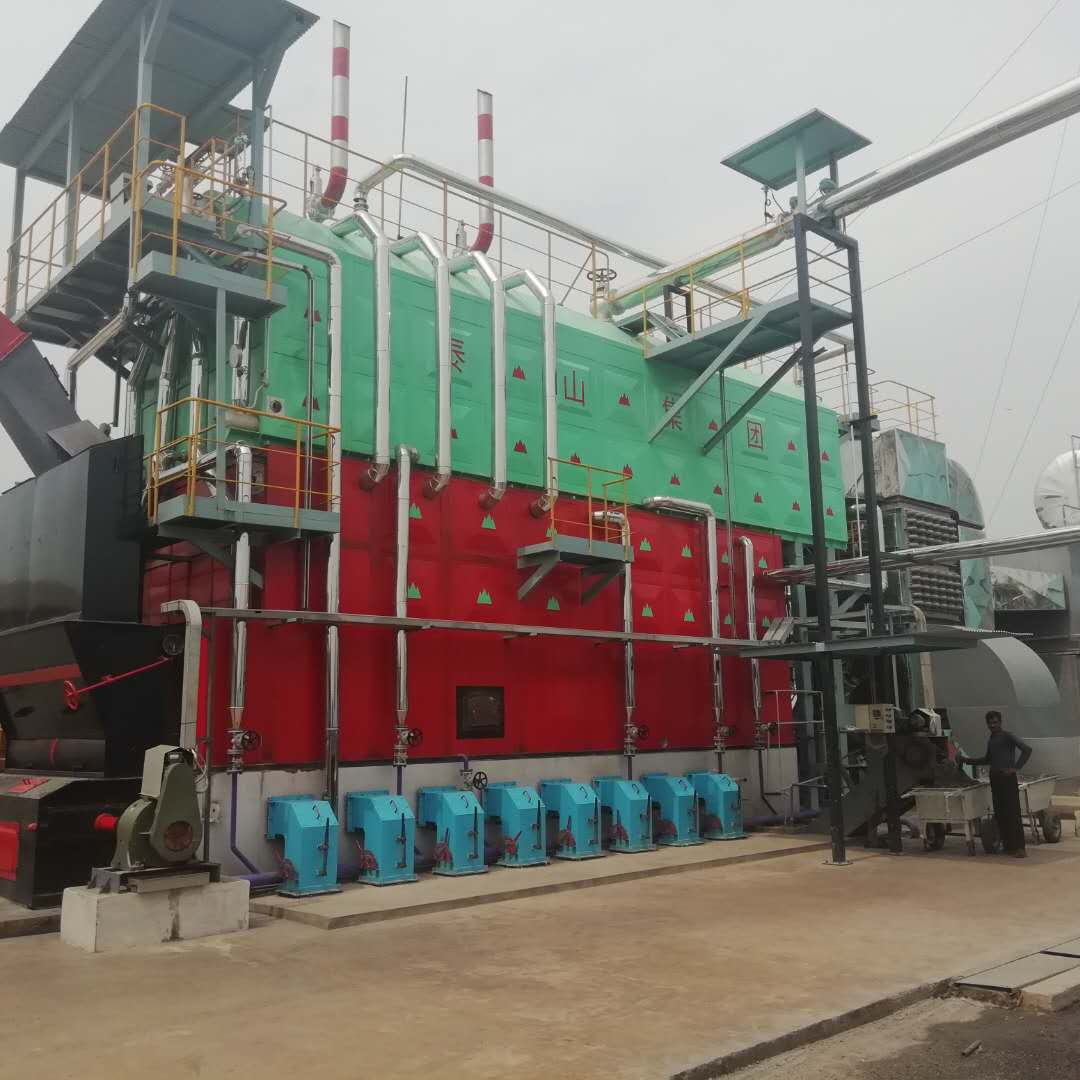
What Maintenance and Inspection Practices Are Essential for Sustaining Performance?
Industrial boilers, heat exchangers, burners, and other thermal systems demand consistent performance, energy efficiency, and safety. However, without a robust maintenance and inspection routine, these systems deteriorate—fuel consumption rises, emissions spike, components fail, and the risk of catastrophic shutdowns increases. Preventive and predictive maintenance practices are essential to preserving thermal efficiency, extending equipment lifespan, and complying with environmental and safety regulations. The goal isn’t just to avoid downtime—it’s to optimize operations and maximize return on energy assets.
Maintenance and inspection practices are essential for sustaining performance because they prevent fouling, detect wear and corrosion early, ensure combustion efficiency, and maintain safety compliance. Key tasks include regular cleaning of heat transfer surfaces, calibration of control instruments, inspection of burners and flame sensors, testing of safety valves, and analysis of flue gases. A combination of scheduled, condition-based, and predictive maintenance approaches ensures that thermal systems operate efficiently, safely, and without unplanned interruptions.
Whether you operate a power plant, refinery, hospital, or district heating facility, adopting structured maintenance protocols is your best defense against performance loss and unexpected costs.
Routine boiler maintenance prevents scale buildup, which improves thermal efficiency and reduces fuel consumption.True
Scale acts as an insulating layer, and removing it during maintenance restores optimal heat transfer, improving energy efficiency.
🛠️ The Three Pillars of Maintenance Strategy
Industrial thermal system maintenance can be classified into three interconnected strategies:
| Maintenance Type | Description | Frequency | Focus Areas |
|---|---|---|---|
| Preventive | Scheduled tasks to prevent known failure modes | Daily to annually | Cleaning, lubrication, calibration |
| Condition-Based | Based on real-time system performance data | Continuous | Sensor monitoring, trending anomalies |
| Predictive | Uses diagnostics and analytics to predict failure | As needed | Vibration, thermography, data models |
Combining all three creates a proactive maintenance culture, ensuring not only longer equipment life but also optimized performance metrics.
🔍 Inspection Checklist for Key System Components
A comprehensive inspection should target all critical subsystems within boilers and related heat transfer equipment.
Weekly to Monthly Inspection Tasks:
| Component | Inspection Action | Tool/Method |
|---|---|---|
| Burners | Check flame shape, ignition, and stability | Visual inspection, flame scanners |
| Heat Exchange Tubes | Check for soot, scaling, or corrosion | Boroscope, thermographic camera |
| Control Valves | Ensure responsiveness and calibration | Manual test, digital positioners |
| Safety Valves | Verify pressure settings and leak tightness | Bench testing, ultrasonic testing |
| Gaskets & Seals | Look for leaks and deterioration | Visual + leak detector spray |
| Feedwater Pumps | Check vibration and flow rate | Vibration analyzer, flowmeter |
| Flue Gas Outlet | Measure exhaust temperature and composition | Stack thermometers, flue gas analyzers |
These inspections prevent cumulative damage, reduce reactive repairs, and protect efficiency.
📊 Effects of Neglected Maintenance on Efficiency
| Maintenance Neglected | Resulting Issue | Efficiency Loss (%) | Safety Risk |
|---|---|---|---|
| Tube Cleaning | Fouling and heat resistance | 5–15% | Moderate |
| Burner Tuning | Poor combustion, high CO/NOx | 5–10% | High |
| Valve Calibration | Process control deviation | 2–8% | Low |
| Flue Gas Monitoring | Undetected excess air or fuel waste | 3–12% | Low |
| Pressure Relief Checks | Overpressure or valve failure | — | Very High |
Regular attention to these components ensures sustained thermal performance and regulatory compliance.
🔧 Boiler-Specific Maintenance Practices
Boilers, especially in high-demand industrial environments, require particular attention.
Annual or Shutdown Tasks:
Open and inspect boiler drums and tubes
Hydrostatic pressure test
Ultrasonic thickness testing for corrosion
Calibration of all combustion controls and sensors
Inspection of refractory linings for cracks
Full cleaning of water- and fire-side surfaces
High-efficiency boilers can maintain performance without cleaning for multiple years.False
Even high-efficiency boilers accumulate scale, soot, and deposits over time, and regular cleaning is necessary to maintain peak performance.
🧪 Modern Predictive Maintenance Tools
To go beyond traditional inspections, industries now adopt predictive analytics and smart diagnostics:
| Technology | Application Area | Benefits |
|---|---|---|
| Vibration Sensors | Bearings, motors, fans | Detects misalignment or wear early |
| Infrared Thermography | Burner tips, heat exchangers | Identifies hot spots or deposit zones |
| AI Performance Models | Entire boiler plant | Predicts failure from sensor trends |
| Smart Gas Analyzers | Flue gas | Real-time combustion tuning |
| Digital Twin Platforms | Full system simulation | Enables virtual testing and tuning |
A case study in a textile plant showed that integrating thermal imaging and flue gas sensors prevented a burner failure, saved 3.7% in energy, and reduced emergency downtime by over 50%.
Infrared thermography can detect fouling in heat exchanger surfaces before it becomes visible.True
Thermography reveals temperature gradients caused by fouled areas, helping target cleaning before severe efficiency loss.
📋 Building an Effective Maintenance Program
Create a Task Matrix: Assign inspection and maintenance tasks based on criticality and frequency.
Maintain a Digital Logbook: Record all actions, results, and findings for each component.
Train Maintenance Personnel: Ensure that staff can identify performance deviations early.
Use KPIs to Track System Health: Monitor flue gas temperature, O₂/CO levels, efficiency, and cycles.
Schedule Cleaning Based on Data: Use fouling factors and thermal resistance data to guide cleaning.
Summary
Sustaining the performance of industrial boilers and heat exchangers hinges on structured, intelligent maintenance and inspection practices. Routine cleaning, diagnostics, and condition monitoring protect against common threats like fouling, corrosion, and control failure. By adopting both traditional and predictive maintenance strategies, operators can ensure continuous efficiency, reduced energy costs, and long-term reliability. In the world of thermal systems, performance isn’t just about design—it’s maintained by discipline.
🔍 Conclusion
The performance of an industrial steam boiler depends on precision combustion and effective heat transfer. Operators must actively manage airflow, burner conditions, and surface cleanliness to achieve optimal efficiency. By addressing these key factors, businesses can unlock fuel savings, reduce emissions, and increase boiler longevity, ensuring consistent and cost-effective steam generation.
📞 Contact Us
💡 Need help optimizing your industrial steam boiler? Our specialists provide efficiency audits, combustion tuning, and thermal performance solutions tailored to your process needs.
🔹 Reach out today to maximize the performance and efficiency of your steam boiler system! ♨️🔥📈
FAQ
What are the key factors influencing heat transfer in steam boilers?
Heat transfer efficiency depends on:
Boiler surface area and design
Cleanliness of heat exchanger tubes
Steam/water flow rate and pressure
Flue gas temperature
Fouling and scaling on internal surfaces can insulate tubes and reduce heat exchange, lowering efficiency and increasing fuel use.
How does combustion efficiency affect overall boiler performance?
Combustion efficiency determines how completely fuel is burned. Incomplete combustion leads to energy loss, higher emissions, and soot buildup. Key variables include air-to-fuel ratio, burner design, and flame temperature control.
Why is proper burner tuning important in steam boilers?
Burner tuning ensures optimal air-fuel mixture, promoting complete combustion and reducing unburnt fuel and CO emissions. Poorly adjusted burners waste energy and increase operational costs. Use of oxygen trim controls enhances consistency.
What role does fuel quality play in boiler efficiency?
High-quality fuel (with consistent calorific value, low ash/moisture) burns more cleanly and predictably, enhancing heat release and combustion stability. Low-grade fuels can cause slagging, fouling, and variable flame conditions, reducing both combustion and heat transfer efficiency.
How can maintenance improve boiler efficiency?
Routine cleaning of boiler tubes, burners, and flue paths
Inspection of refractory linings and insulation
Monitoring stack temperature and flue gas composition
Calibrating sensors and controls regularly
These actions preserve optimal thermal performance and prevent costly degradation in boiler output.
References
Steam Boiler Efficiency Fundamentals – https://www.energy.gov
Combustion Control in Industrial Boilers – https://www.sciencedirect.com
Fuel Quality and Boiler Performance – https://www.researchgate.net
Burner Tuning Best Practices – https://www.epa.gov
Industrial Boiler Heat Transfer Analysis – https://www.bioenergyconsult.com
Steam System Maintenance Guidelines – https://www.mdpi.com
Flue Gas Monitoring for Efficiency – https://www.energysavingtrust.org.uk
O₂ Trim and Control Systems – https://www.automation.com
Thermal Performance Optimization in Steam Plants – https://www.iea.org
ASME Boiler Efficiency Standards – https://www.asme.org

